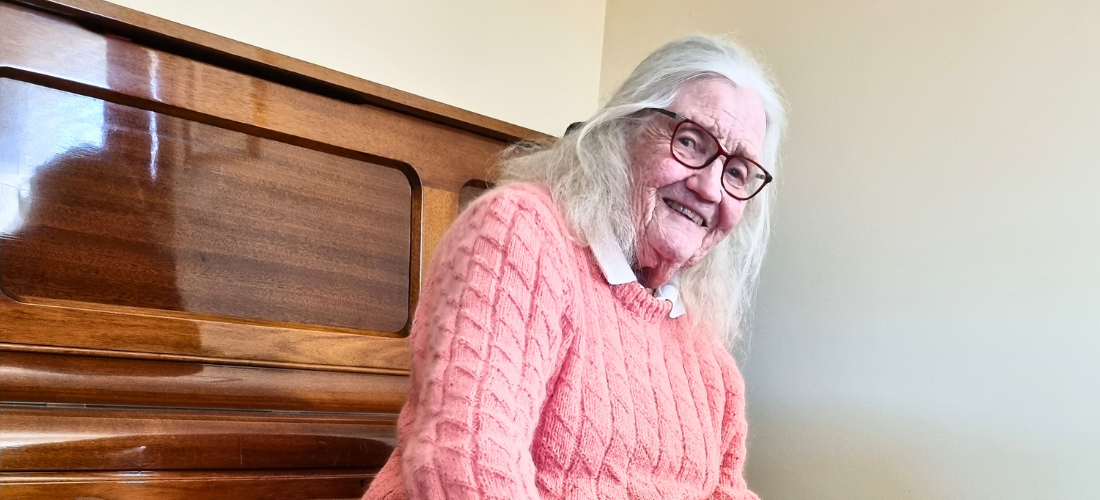National peak body Macular Disease Foundation Australia (MDFA) has launched Eye Connect – Australia’s first comprehensive support service for people living with macular disease, which is estimated to affect 1.9 million Australians nationwide.1,2
Studies have shown that only 56 percent of patients with macular disease recall receiving a clear diagnosis, including the name of their condition,3 with 58 percent of patients unable to recall receiving any lifestyle modification advice from their eyecare professional.4
MDFA has responded to this knowledge gap with Eye Connect, which enables people to access free, evidence-based support in between appointments with their eyecare professional.
Eye Connect is currently available to people living with any stage of age-related macular degeneration (AMD). It has been developed based on insights from a neovascular AMD pilot program and extensive research involving people living with macular disease, carers, ophthalmologists and optometrists. In the near future the service will be expanded to support a number of other macular conditions.
A new Eye Connect community service video for eyecare professionals produced by MDFA is available here. The aim of the video is to provide eyecare professionals with an understanding of how MDFA can support their patients after they leave the clinic.
Eye Connect offers a range of tailored support in three key areas:
- Health information: patients are provided with evidence-based information about macular disease, and non-clinical support services to help them confidently manage their condition.
- Practical advice: Tips and guidance on things like nutrition for healthy eyes, immediate care after their appointments, daily living with reduced or low vision, and transport advice.
- Emotional support: For some, a diagnosis of macular disease – or living with an eye condition – can be a difficult time. The Eye Connect team can help patients manage some of the worries and concerns people may have about their diagnosis and treatment. Eye Connect can also connect patients to peer support where they can connect with trained volunteers and other people also living with macular disease.
Dr Kathy Chapman, CEO, Macular Disease Foundation Australia, said: “We know that people with macular disease want to connect with more practical and emotional support to help them manage their condition when they’re at home.
Eye Connect does this by offering a range of evidence-based information and resources so people are equipped to manage living with the disease more confidently in their daily lives.
Dr Kathy Chapman, CEO
“Supporting eyecare professionals to deliver better health outcomes for patients with macular disease is a key priority for Macular Disease Foundation Australia. We have every confidence that Eye Connect will help drive this forward by complementing the information people receive in a clinical setting,” said Dr Chapman.
Approximately 1.5 million Australians over the age of 50 years have some evidence of AMD.1 It is anticipated this figure will rise to an estimated 1.7 million people by 2030.2 Diabetic retinopathy, a complication of diabetes, affects 1 in 3 Australians aged over 50 who have diabetes.5 Between 300,000 to 400,000 people are affected by diabetic retinopathy, which is the leading cause of blindness in working-aged Australians.6,7 Diabetic macular oedema is a serious complication experienced by people with diabetic retinopathy and requires prompt treatment.
Supporting people with diabetic eye disease will be a major focus in the expansion of the Eye Connect service.
“The Eye Connect service will provide a valuable supplement to the information that clinicians give their patients with macular disease,” said Associate Professor Alex Hunyor, Chair of the Macular Disease Foundation Australia Medical Committee.
“Offering support that is tailored to the individual patient is a really practical addition to the services already provided by the Foundation.”
Health professionals can refer patients to the new Eye Connect service by visiting http://3.27.170.16/health-professional/refer-to-eyeconnect/, via Oculo or by calling Macular Disease Foundation Australiaon 1800 111 709. Patients can also self-refer via the foundation’s website or over the phone.
References
1 Australian Government Department of Health (2019). National Strategic Action Plan for Macular Disease. Accessed at www.health.gov.au/sites/default/files/documents/2019/09/national-strategic-action-plan-for-macular-disease_1.pdf
2 Deloitte Access Economics and Macular Degeneration Foundation (2011). Eyes on the future – A clear outlook on age-related macular degeneration.
3 Clinton, S., Hoad, G., Bloomfield, P., Malcolm, E., Searle, K., Jarman, S., Barber, R. and Tucker, S., 2024. Comparing views of patients and eye care professionals on the information provided on age-related macular degeneration and diabetic macular oedema. Eye, pp.1-3.
4 Dave, S., Binns, A., Vinuela-Navarro, V. and Callaghan, T., 2022. What advice is currently given to patients with age-related macular degeneration (AMD) by eyecare practitioners, and how effective is it at bringing about a change in lifestyle? A systematic review. Nutrients, 14(21), p.4652.
5 Baker IDI and Centre for Eye Research Australia (2013). Out of Sight. Accessed at: https://baker.edu.au/-/media/documents/impact/outofsightreport.pdf?la=en
6 National Health and Medical Research Council (2008). Guidelines for the management of diabetic retinopathy. Accessed at www.optometry.org.au/wp-content/uploads/Professional_support/Guidelines/nhmrc_diabetic_guidelines.pdf
7 Dirani M et al. (2013). Out-of-sight – a report into diabetic eye disease in Australia. Areport for Baker IDI and Centre for EyeResearch Australia. Accessed at baker.edu.au/-/media/documents/impact/outofsightreport.pdf?la=en#:~:text=On%20average%20one%20in%20three,3.3%25%20had%20diabetic%20macular%20oedema
MEDIA CONTACTS:
Jonathan Abbott | Macular Disease Foundation Australia | Communications Manager
E: jon@mdfoundation.com.au | M: +61 413 995 189
The information provided in this release is provided by Macular Disease Foundation Australia located at Mezzanine Level, 383 Kent Street Sydney NSW 2000.
Posted: 9 July 2024















